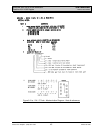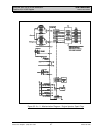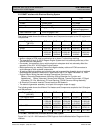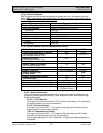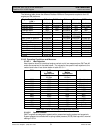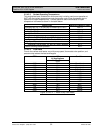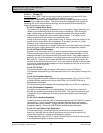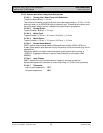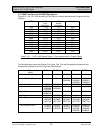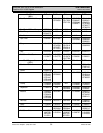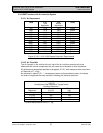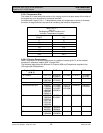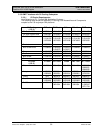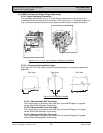
ENGINE APPLICATION MANUAL GM Powertrain
Gasoline 4.3L V6 90 Degree Revised: 08/15/2000
File: c:\data\manuales\v6-truck\am43v6#3.doc
Contact:Luis Nespolo - (248) 857-1558 Printed: 8/15/00
53
3.2.4.3.5 Coolant Fill
Assembly Plant- GMPT requires the engine cooling system to be at least 95% filled
(from a dry system no bleed valves) before the engine is started.
Service- GMPT requires a clear unobstructed view of the coolant deaeration tank be
provided in an underhood location. The system should be designed to be capable of
replacing 95% of the coolant drained during a service situation without starting the
engine or opening any bleed valves.
3.2.4.3.5.1 System Drain Down
The system is to be designed to displace all air in the engine, hoses, heater(s), and
radiator into the deaeration tank while the engine is operating. After the engine,
upper radiator hose, and radiator are charged with coolant the charge must be
maintained at all times prior to low coolant light activation. The only air in the
cooling system should be located in the deaeration tank.
Letting air enter the engine, upper radiator hose, or radiator can allow coolant in the
system to drain down, which is unacceptable. Drain down can result in a false
indication of the coolant level at the deaeration tank.
It also forces the system to run aerated coolant for a short time after every cold start
while the engine, upper radiator hose, and radiator are recharged with coolant.
3.2.4.3.5.2 Service Fill/Procedure
Capability to fill the system to 95% or more of capacity without running the engine.
This ensures enough coolant is in the system to prevent engine damage if run for
extended periods of time without checking the coolant level. Rear heater systems
generally can not be filled without running the engine making it difficult to achieve a
90% static fill. However, rear heaters are difficult to drain as well and typically do
not have to be refilled during service fill. If the rear heater is drained, a few minutes
of running at moderate engine speeds is usually adequate to flush the air out of the
heater and achieve a 90% fill.
3.2.4.3.5.3 Fill Rate
The system should be able to achieve a 95% static fill at the 3 GPM rate.
This indicates adequate sizing of the deaeration tank fill line and proper venting of the
system.
3.2.4.3.5.4 Drawdown Capacity
The cooling system must be capable of losing approximately 10% or 2.4L (2.5 QTS.)
of coolant without aeration occurring or loss of flow. Run at 3500 RPM with a
blocked open thermostat.
This allows the engine to operate without damage when only a 95% fill is obtained.
3.2.4.3.5.5 Deaeration Capability
The ability for the system to run un-aerated within 20 minutes after a service fill.
Run with an operating thermostat and at 3500 RPM. The system needs to be able
to purge air into the deaeration tank during closed and partially open thermostat
conditions.
3.2.4.3.5.6 Air Handling Capability
The ability to lose no more than 50% of the water pump flow with 0.2 CFM of air injected
into the engine. The air is injected into an area after the water pump to simulate a
combustion leak into the coolant. Coolant loss during the test should not exceed the
Drawdown capacity. Test run at 3500 RPM with a blocked open thermostat.
3.2.4.3.5.7 Low Coolant Light Calibration
The low coolant light is to be calibrated to activate prior to coolant aeration
occurring. Normally the low coolant light should come on when the amount of
coolant lost is less than or equal to the Drawdown capacity.
In some installation (see 3.5.3.5.1) the Low Coolant Light will have to come on prior
to the Drawdown capacity to prevent drain down.



